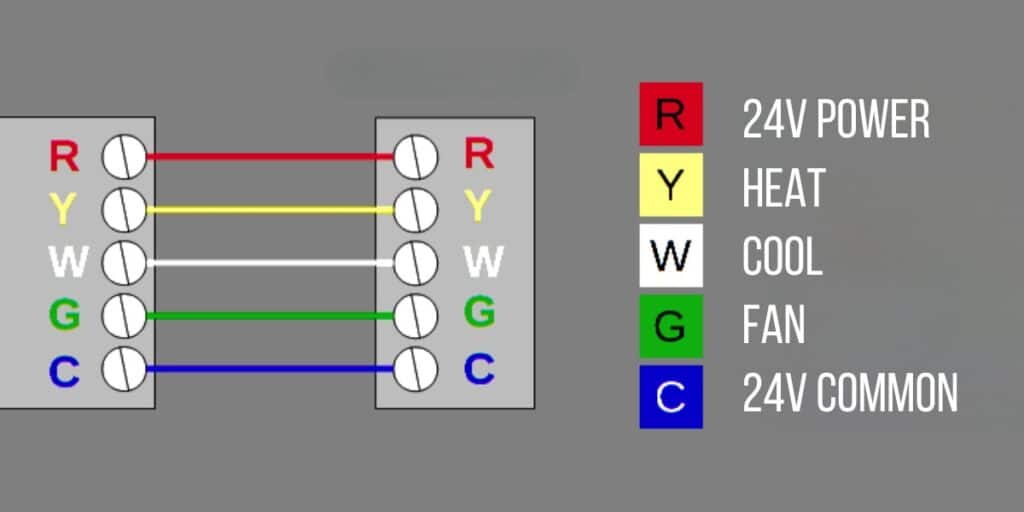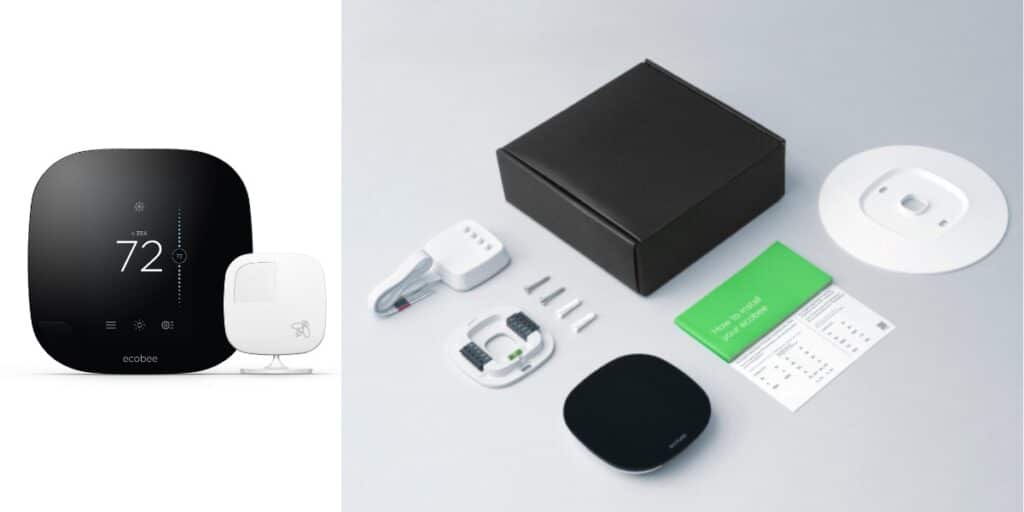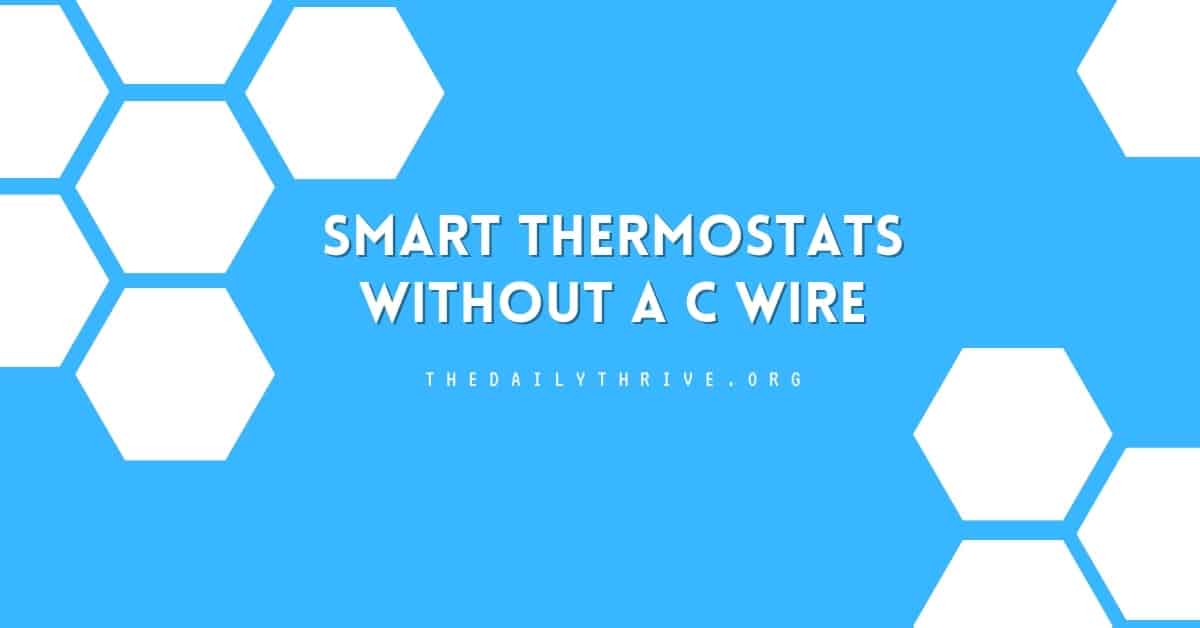Smart thermostats have revolutionized home heating and cooling, offering unparalleled convenience and efficiency. However, installing a smart thermostat often requires a C wire, a common hurdle for many homeowners. This article delves into how you can enjoy the benefits of a smart thermostat even without a C wire.
The C wire, or Common wire, provides 24 VAC (volts alternating current) power to a thermostat. In traditional HVAC systems, this wire is crucial for maintaining consistent power, especially for the advanced features of smart thermostats like WiFi connectivity and continuous display.
What is a common wire for a thermostat?
In HVAC systems, thermostat wires are color-coded to indicate their function, although this is not a strict standard. Here’s a brief overview:
- G-wire: Typically green, this wire signals the HVAC system to turn on the fan.
- R-wire: Usually red, it carries the 24 V AC power supply.
- Y-wire: Often yellow, this wire activates the cooling system.
- W-wire: Generally white, it signals to turn on the heating system.
- C-wire: Commonly black or blue, the C wire provides continuous power to the thermostat.
However, it’s important not to rely solely on the color coding. The correct color wire might not always be available during repairs or maintenance. It could be replaced with a different color. This mismatch can lead to confusion and incorrect wiring, especially if unfamiliar with HVAC systems.
What is the C wire in the thermostat?
The “C” in C wire stands for “common.” This wire is essential in providing a return path for 24 volts of continuous power to the smart thermostat.

In simpler terms, the C wire closes the circuit, ensuring that the thermostat receives constant 24-volt power. This continuous power supply is particularly vital for smart thermostats, which require more power than traditional ones for features like WiFi connectivity and persistent display screens.?
The C wire’s role in smart thermostat installations cannot be overstated. While traditional thermostats might operate without a continuous power source, smart thermostats, with their advanced features, require this steady power supply.
Without the C wire, a smart thermostat might experience issues such as intermittent functionality, loss of WiFi connection, or display problems. It’s the backbone that supports the advanced functionalities that define smart thermostats.
What to do if You don’t have a C-Wire?
Many older homes may not have a C-wire. This common scenario leads some to believe installing a smart thermostat is off the table. However, this is not necessarily the case. Even without a C-wire, you can still enjoy the benefits of a smart thermostat with the right approach and professional assistance.
How to install a smart thermostat without a C wire?
Installing a smart thermostat without a C wire involves a few steps and options, depending on your current system and the smart thermostat model you’ve chosen.
Here are several solutions to consider:
1. Double-check if You Have a C Wire
First, ensure that your home really doesn’t have a C wire. Turn off the power to your current thermostat and remove it to check for a blue wire, typically the C wire. If you find it, you’re ready to install most smart thermostats.
2. Use Your Existing Wires
If there’s no C wire, but your thermostat has four other wires, one of these might power a smart thermostat. Brands like Ecobee and Nest are known for their adaptability to such setups. However, never try to rewire independently, as it could lead to damage. Consult an HVAC expert to identify whether an existing wire can be used.
3. Get an Adaptor
In cases where the existing thermostat connections have only two wires, the power may be too strong for a smart thermostat. An adaptor can adjust the voltage to a level suitable for your new device. Your HVAC provider can recommend the right adaptor and handle the installation.
4. Use a Battery-Powered Smart Thermostat
Some smart thermostats operate on batteries and do not require a C wire or any wiring modifications. This is a convenient option if you prefer not to alter your home’s electrical setup.
5. Replace Your Wiring
Consider rewiring if your preferred smart thermostat model requires a C wire and cannot adapt to other solutions. This is also advisable if the existing wires are frayed or damaged. Professionals should do rewiring to ensure safety and compliance with electrical standards.
The absence of a C-wire should not deter you from upgrading to a smart thermostat. Most homes can accommodate a smart thermostat installation with the advances in HVAC technology and various workaround solutions.
Consulting with a professional HVAC technician is crucial regardless of the chosen solution. They can provide the safest and most effective strategy for integrating a smart thermostat into your home, ensuring optimal functionality and safety.
Smart Thermostats Without C Wire
Fortunately, the market now offers smart thermostats that operate effectively without a C wire. These devices are designed to work around the traditional power limitations, often through internal batteries or power harvesting techniques.
Google Nest Thermostat E

The Google Nest Thermostat E is a versatile, user-friendly smart thermostat that doesn’t always need a C wire. Check Google’s compatibility guide before buying. It features a sleek design with a frosted display, offering an eco-friendly temperature setting indicator – the Nest Leaf. It’s compatible with major voice assistants like Google Assistant and Amazon Alexa, making adjustments easy via voice commands or its smartphone app.
Ecobee3 Lite Smart Thermostat

The Ecobee3 Lite SmartThermostat, suitable for homes without a C wire, comes with a Power Extender Kit for easy installation, potentially involving some basic rewiring. It allows comprehensive control over your heating and cooling systems via its app. However, it lacks some features of newer Ecobee models. The Ecobee3 Lite also integrates with other Ecobee products and sensors, adding functionalities like automated off-switching. Its sleek design and user-friendly app make it a popular choice.
Sensibo Sky

Ideal for homes without central heating or for controlling AC units, the Sensibo Sky offers a straightforward installation without requiring a C wire. It connects to Wi-Fi for app-based control and is compatible with voice assistants like Siri, Google, and Amazon Alexa. The Sensibo Sky also features energy-saving functions such as scheduling and geo-fencing, helping to reduce energy bills efficiently.
When selecting a smart thermostat for a system without a C wire, consider factors like compatibility, battery life, and additional features. Brands like Ecobee and Nest offer models that are well-suited for such setups. Each has its own method of circumventing the need for a C wire, so reviewing their approaches is crucial.
Homeowners without a C wire can still enjoy the benefits of a smart thermostat. Options like Power Extender Kits, adaptors, and battery-powered models make installation feasible in almost any home. The choice of smart thermostats, including user-friendly models like the Google Nest Thermostat E and the Ecobee3 Lite, offers flexibility and compatibility with various HVAC systems.
Despite potential concerns about installation complexities, many smart thermostats come with comprehensive guides, and professional assistance is always available for those who prefer expert installation. Ultimately, the absence of a C wire is no longer a hindrance to experiencing smart home technology’s convenience and energy efficiency.






